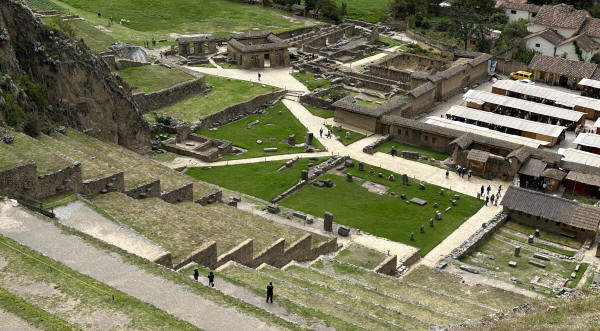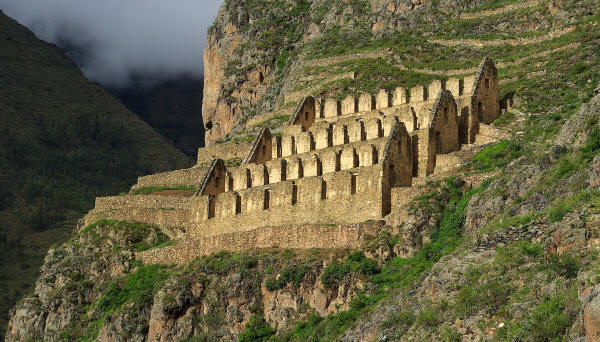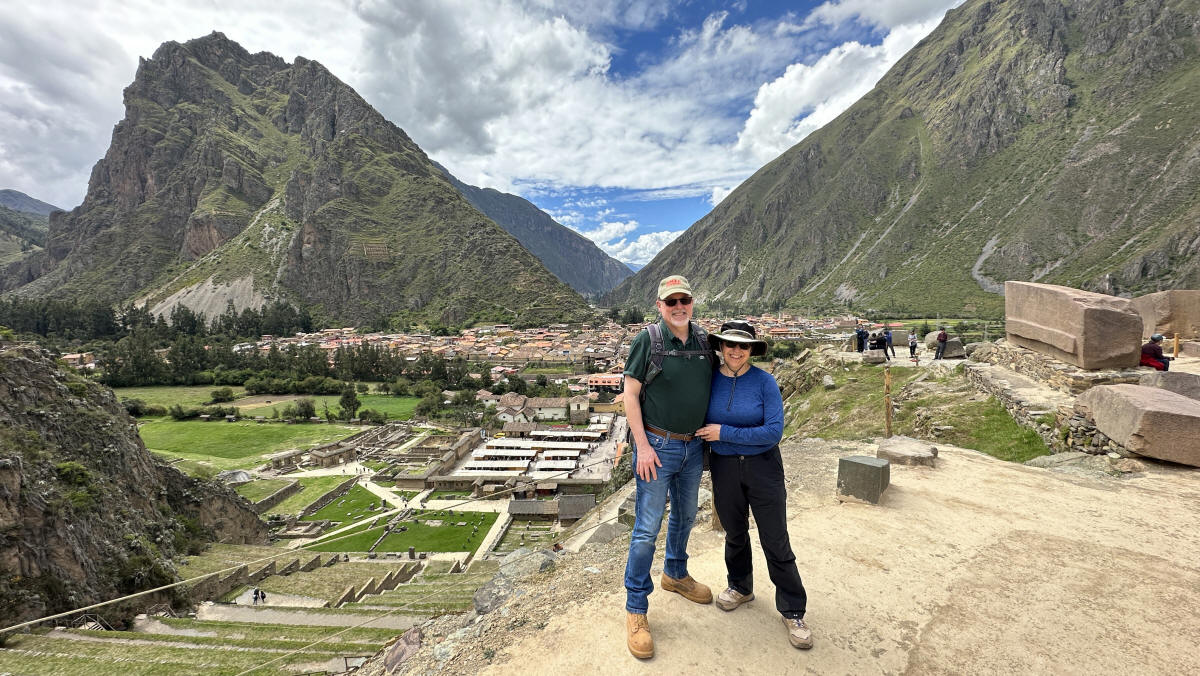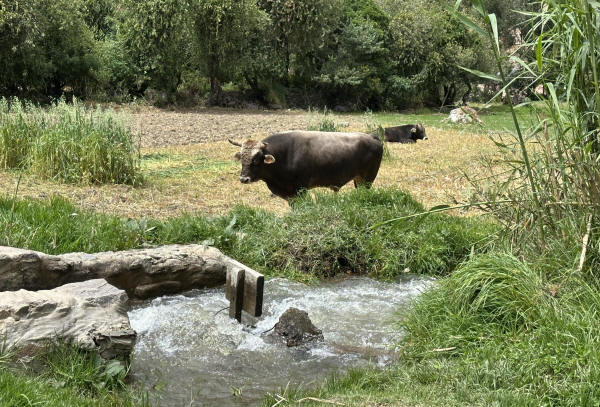Next, the Complejo Arqueologico Moray (ok, that just means the Moray Archeological Complex), an Incan agricultural research station where they adapted different kinds of crops, herbs, and flowers to high altitudes and served as a model for calculating agricultural production in the Urubamba (Sacred) Valley (surmised from the different kind of lowland seeds that were planted in various sections of the concentric rings; I’m not sure I buy it, particularly given there were different smaller versions of the same circular pattern nearby like the one with us standing in front of it). Still, it was pretty cool looking.
|
|
|
We visited Ollantaytambo, a town that was a home of Inca nobility until it was destroyed by Manco Inca, leader of the native resistance against the Spanish, to slow the advance of the Spanish Conquistidor Hernando Pizzarro (yes, the same guy offed by his countrymen with his head stuck in a metal box). The town, built on the ruins of the Inca site, was Spanish, with the same rough architecture as other Spanish buildings, and was interesting in it's own right, but the star of the show was the ruins. Prohibited: climbing, camping, fires, alcohol, drones, dogs, littering, and people with big hands (ok, I couldn’t quite figure out what one of the symbols was). Fascinating buildings, including temples, granaries, and palaces built into the mountings around the town itself.
|
|
|
|
|
|
|
|
|
 |
 |

The walls were built with round stones under the large blocks to help dampen vibration in the case of an earthquake, and buffer stones to prevent damage from temperature gradients (sadly failing now due to global warming making the thermal differences more extreme; you can see one of the fractures in the photo below). The main structure of the ruins is the Sun Temple, an uncompleted building which features the Wall of the Six Monoliths (shown below).
|
|
|
And, of course, regular life is interspersed in the ruins, like most of the locations we visited, including herd animals that served as both livestock and a way to keep the grass trimmed.
 |
The next place we visited (Machu Picchu was between these two visits) was Sacsayhuamán. I liked this description of the fortress by Pedro Pizarro: "On top of a hill they [the Inca] had a very strong fort surrounded with masonry walls of stones and having two very high round towers. And in the lower part of this wall there were stones so large and thick that it seemed impossible that human hands could have set them in place...they were so close together, and so well fitted, that the point of a pin could not have been inserted in one of the joints. The whole fortress was built up in terraces and flat spaces." The numerous rooms were "filled with arms, lances, arrows, darts, clubs, bucklers and large oblong shields...there were many morions...there were also certain stretchers in which the Lords travelled, as in litters."
The towers were knocked down by the Spanish, the stones used to build Spanish cathedrals, the weapons looted, but the walls themselves where built out of stones that weighed 120 tons. They are all that remain of the massive complex. Our guide told us that there had been experiments by archeologists to try to recreate the construction techniques used with 10 ton stones, all of which failed. His personal opinion (really) was that the Incas traded gold to space aliens that moved the stones in place with their spacecraft.
Sounds a bit far fetched, but who knows?
As we moved away from the complex, it was interesting to see a "Christ the Redeemer" style statue on a hilltop nearby over looking Cusco and Sacsayhuamán.
And on the way out, we saw what was described as a "water mirror" for doing astrological observations. This came up in Machu Picchu as well; circular areas that held water and were filled with black sand and stones. 100% don't get why you would look at a reflection of the stars instead of the stars... but hard to say what else they could be used for. This one had a tunnel chopped through the rock for water level management.
And our last "Sacred Valley" site, Q'enqo. It is one of the largest huacas(holy places) in the Cusco Region. Many huacas were based on naturally occurring rock formations. It was believed to be a place where sacrifices and mummification took place; there were rock slots around what was a rock formation carved into the shape of ... well, theoretically a Puma but the guide believed it was a turtle(picture below, you can come to your own conclusion). The Spanish wrecked it enough that you couldn't tell. According to the guide, the mummies of prior Inca rulers would be pulled out of storage and seated when a new ruler was mummified in an underground masoleum. The actual mummification site was underground (also pictured below) and pits along the sides were full of bones, which our guide suggested were ritual sacrifices included as part of the mummification ceremony.